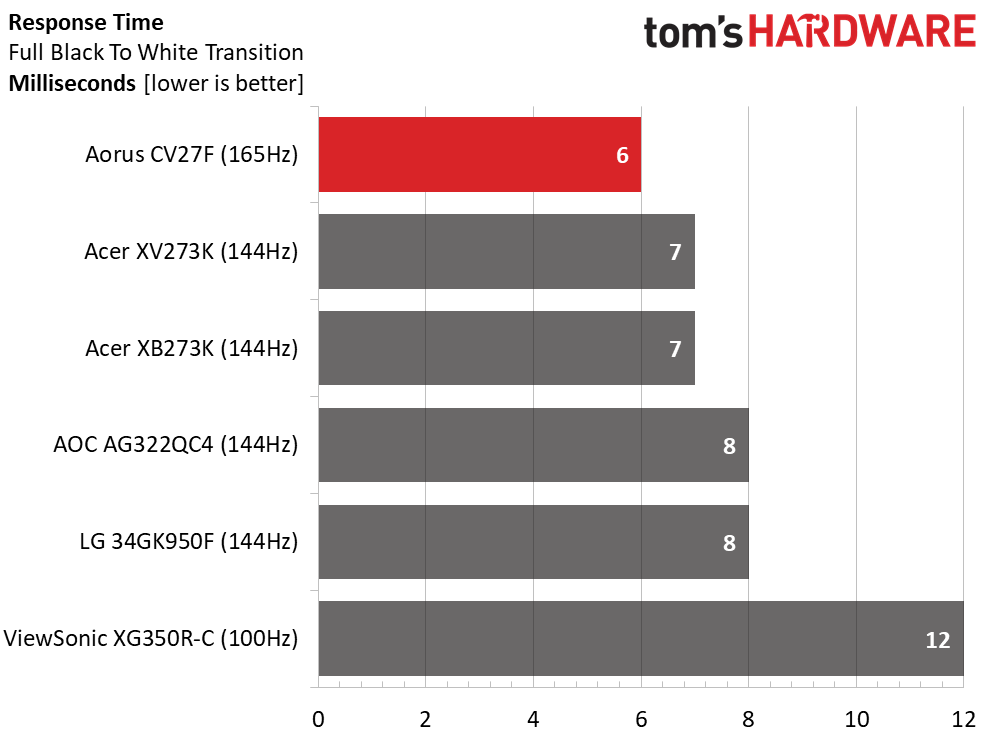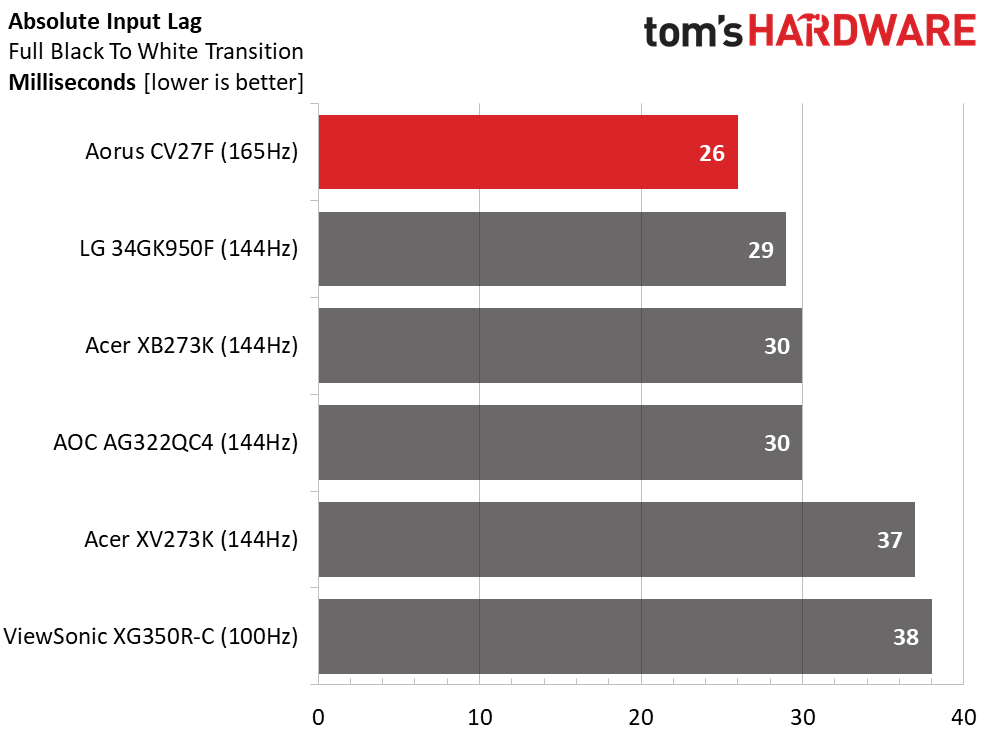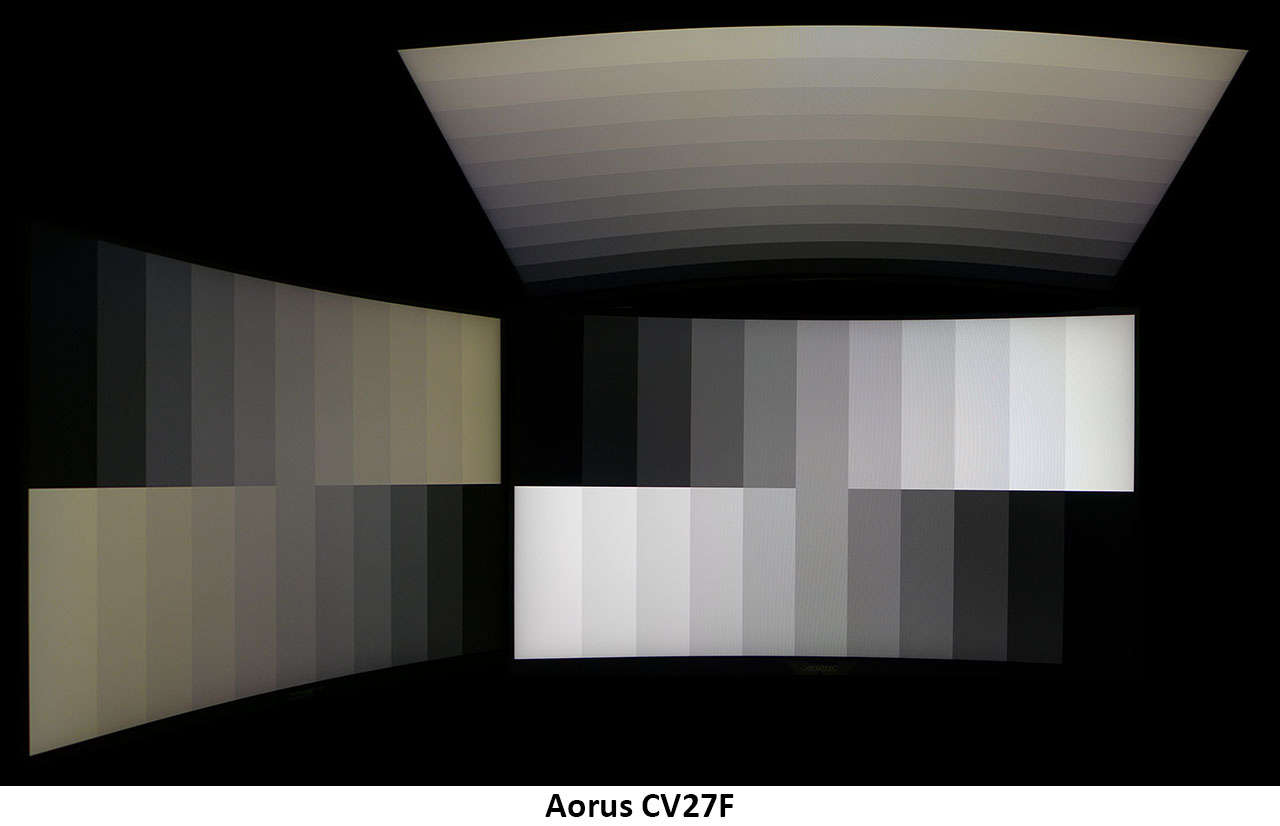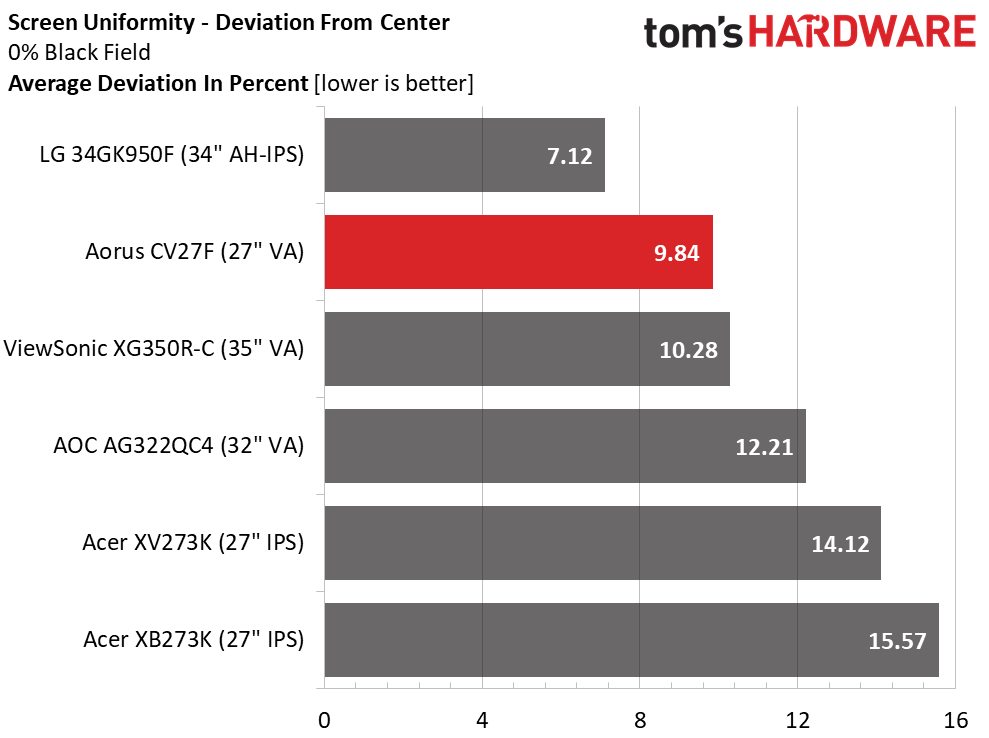Aorus CV27F 165Hz Curved Gaming Monitor Review: HDR on Budget
Why you can trust Tom's Hardware
Viewing Angles, Uniformity, Response and Lag
Viewing Angles
The CV27F displays off-axis performance typical of a VA panel. Though detail stays strong at 45 degrees to the sides, the brightness reduction is around 40%, and there is a marked shift to green. The top-down view is much the same but with a red tint. Sharing a curved monitor is a dicey proposition anyway, especially in the 16:9 aspect ratio. You’ll have little trouble with multi-panel setups though. Head-on viewing shows no issues.
Screen Uniformity
To learn how we measure screen uniformity, click here.
The CV27F just sneaks in below our 10% standard for black screen uniformity. There were no visible hotspots or bleed areas in our sample. Our luminance meter noted a slight rise in the upper right zone, but we couldn’t see it with the naked eye.
Pixel Response and Input Lag
Click here to read up on our pixel response and input lag testing procedures.


Clearly, 165 Hz beats 144 Hz for both responsiveness and input lag. It’s hard to imagine 1-2ms making a difference, but higher refresh rates visibly reduce blur. With such a fast screen draw time, there was no judder on this screen, even during our gaming mouse’s quickest movements. The CV27F has a backlight strobe feature, but there’s no need to use it, especially since you must give up adaptive refresh to use it. Those extra Hz also reduce input lag a bit. 26ms is among the lowest scores in our database. We rate the CV27F as a competition-ready display, suitable for skilled players.
MORE: Best Gaming Monitors
MORE: How We Test Monitors
Get Tom's Hardware's best news and in-depth reviews, straight to your inbox.
MORE: All Monitor Content
Current page: Viewing Angles, Uniformity, Response and Lag
Prev Page HDR Performance Next Page Conclusion
Christian Eberle is a Contributing Editor for Tom's Hardware US. He's a veteran reviewer of A/V equipment, specializing in monitors. Christian began his obsession with tech when he built his first PC in 1991, a 286 running DOS 3.0 at a blazing 12MHz. In 2006, he undertook training from the Imaging Science Foundation in video calibration and testing and thus started a passion for precise imaging that persists to this day. He is also a professional musician with a degree from the New England Conservatory as a classical bassoonist which he used to good effect as a performer with the West Point Army Band from 1987 to 2013. He enjoys watching movies and listening to high-end audio in his custom-built home theater and can be seen riding trails near his home on a race-ready ICE VTX recumbent trike. Christian enjoys the endless summer in Florida where he lives with his wife and Chihuahua and plays with orchestras around the state.
-
Dantte Screen Size, Aspect Ratio and Curve RadiusReply
24 inches / 16:9
Curve Radius: 1500mm
Typo, its 27"....
And I'm confused... how is $350 a "budget" when I can purchase the AOC AG273QCX for $299 ($50 cheaper) on Amazon right now which has a HIGHER resolution and FASTER response?

